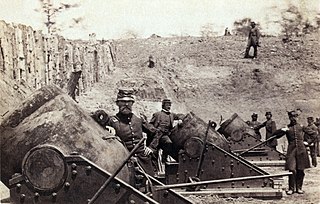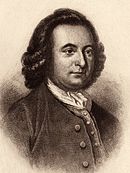The Virginia Portal  Virginia, officially the Commonwealth of Virginia, is a state in the Southeastern and Mid-Atlantic regions of the United States between the Atlantic Coast and the Appalachian Mountains. The state's capital is Richmond and its most populous city is Virginia Beach, though its most populous subdivision is Fairfax County, part of Northern Virginia, where slightly over a third of Virginia's population of 8.7 million live. Eastern Virginia is part of the Atlantic Plain, and the Middle Peninsula forms the mouth of the Chesapeake Bay. Central Virginia lies predominantly in the Piedmont, the foothill region of the Blue Ridge Mountains, which cross the western and southwestern parts of the state. The fertile Shenandoah Valley fosters the state's most productive agricultural counties, while the economy in Northern Virginia is driven by technology companies and U.S. federal government agencies, including the U.S. Department of Defense and Central Intelligence Agency. Hampton Roads is also the site of the region's main seaport and Naval Station Norfolk, the world's largest naval base. (Full article...) Selected article
At the Battle of Malvern Hill (July 1, 1862) during the American Civil War, the Confederate Army of Northern Virginia under the command of General Robert E. Lee and the Union Army of the Potomac under General George B. McClellan clashed near Richmond, Virginia, the Confederate capital.
Confederate commander-in-chief Joseph E. Johnston had fended off McClellan's repeated attempts to take the city of Richmond as part of McClellan's ambitious Peninsula Campaign. After Johnston was wounded, Lee took command and launched a series of counterattacks, collectively called the Seven Days Battles, culminating in the action on Malvern Hill. The battle involved over fifty thousand soldiers from each side, hundreds of pieces of artillery and three warships. The Union V Corps, under Fitz John Porter, took up positions on the hill on June 30 in preparation for the battle, which began the following day. Confederate preparations were hindered by several mishaps. Nonetheless, the Confederates attacked first, when the artillery on the left flank began firing upon the Union line. The Federal artillery, however, was the story of the day, repulsing attack after attack. In the aftermath of the battle, the Confederate press heralded Lee as the savior of Richmond. McClellan was criticized harshly for his absence from the battlefield, an issue that would haunt him when he ran for president in 1864. From Malvern Hill, McClellan and his forces withdrew to Harrison's Landing where he would stay until August 16. Lee withdrew to Richmond to prepare for his next operation, as the action on Malvern Hill ended the campaign on the Peninsula. Selected biography
George Mason IV (December 11, 1725 [O.S. November 30, 1725] – October 7, 1792) was an American planter, politician and delegate to the U.S. Constitutional Convention of 1787, one of three delegates who refused to sign the Constitution. His writings, including substantial portions of the Fairfax Resolves of 1774, the Virginia Declaration of Rights of 1776, and his Objections to this Constitution of Government (1787) in opposition to ratification, have exercised a significant influence on American political thought and events. The Virginia Declaration of Rights, which Mason principally authored, served as a basis for the United States Bill of Rights, of which he has been deemed the father.
Mason was born in 1725, most likely in what is now Fairfax County, Virginia. He married in 1750, built Gunston Hall, and lived the life of a country squire, supervising his lands, family, and slaves.As tensions grew between Britain and the American colonies, Mason came to support the colonial side, and used his knowledge and experience to help the revolutionary cause, finding ways to work around the Stamp Act of 1765 and serving in the pro-independence Fourth Virginia Convention in 1775 and the Fifth Virginia Convention in 1776. Mason prepared the first draft of the Virginia Declaration of Rights in 1776, and his words formed much of the text adopted by the final Revolutionary Virginia Convention. During the American Revolutionary War, Mason was a member of the powerful House of Delegates of the Virginia General Assembly but, to the irritation of Washington and others, he refused to serve in the Continental Congress in Philadelphia, citing health and family commitments. Mason was in 1787 named one of his state's delegates to the Constitutional Convention and traveled to Philadelphia, his only lengthy trip outside Virginia. He was active in the convention for months before deciding that he could not sign it. He cited the lack of a bill of rights most prominently in his Objections, but also wanted an immediate end to the slave trade and a supermajority for navigation acts, which might force exporters of tobacco to use more expensive American ships. He failed to attain these objectives there, and again at the Virginia Ratifying Convention of 1788, but his prominent fight for a bill of rights led fellow Virginian James Madison to introduce one during the First Congress in 1789; these amendments were ratified in 1791, a year before Mason died. Obscure after his death, Mason has come to be recognized in the 20th and 21st centuries for his contributions both to the early United States and to Virginia. This month in Virginia history
Random Virginia articleA random generator will select an article about… 
(note: generator may be slow) Things you can do
Tasks
Selected image Union Army battery of 10-inch Seacoast mortars at Yorktown for the Siege of Yorktown Did you know -
Fact sheet
State symbols:
Government
Related portalsVirginia topicsSubcategoriesSelect [+] to view subcategories
Associated WikimediaThe following Wikimedia Foundation sister projects provide more on this subject:
Discover Wikipedia using portals |
Purge server cache


























